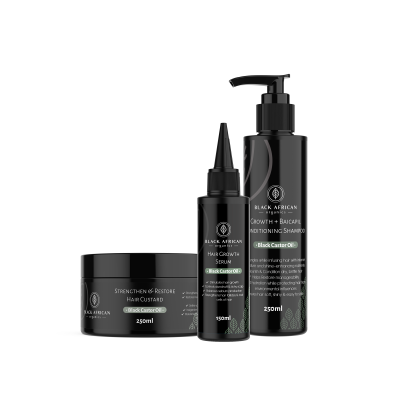What is my hair porosity and what does it mean?
Porosity refers to how well your hair is able to absorb and hold moisture. It is affected by the flexible outer hair layer called the cuticle, which determines how easily moisture and oils pass in and out of your hair. For most, porosity is genetic, but it can also be affected by external factors such as heat treatments and chemical processing. Knowing your hair’s porosity can help you choose the right products to keep your hair well-moisturized, strong and shiny.

Determining Hair Porosity
There are two simple methods you can use to find out how porous your hair is.
- The Float Test: Take a few strands of hair from your comb or brush and drop them into a bowl of water. Let them sit for 2-4 minutes. If your hair floats, you have low porosity. If it sinks, you have high porosity.
- THE H20 TEST: To determine your hair porosity level using water, spritz a small section of curls with water and watch how your hair reacts – does your hair absorb the water quickly (indicating high porosity) or does it remain on top (indicating a low porosity level)?
LOW POROSITY
- Hair with low porosity has a tightly bound cuticle layer with overlapping scales that lay flat.
- This type of hair is usually considered healthy, and is often very shiny, especially when it’s dark in color.
- Low porosity hair repels/ fends of moisture when you try to wet it and is hard to process since it resists penetration of chemicals.
- Low porosity hair is also prone to build-up from protein-rich deep conditioning products, which can leave it feeling stiff and straw-like.
- Stick to protein-free conditioners/ moisturisers
- Use moderate heat with deep conditioning treatments to help open up the tightly bound cuticle.
- Low porosity hair requires moisturizers rich in emollients such as shea butter, jojoba oil, coconut oil and mineral oil.
- Benefits from humectant products, which attract and hold moisture to your hair. So, Glycerin is your friend.
- Choose lighter, liquid-based products such as hair milks that won’t sit on your hair and leave it oily or greasy.
Low Porosity Curl Care
Low porosity hair has very dense cuticles, so it’s hard to inject moisture into the hair shaft, although it does retain moisture once it absorbs. To raise the cuticle, follow these tips:
- Use heat. Use Deep Treatment Curl Restoration Therapy under a hooded drier, steamer or even a warm towel or shower cap, to help products better absorb and bind with the hair better.
- Always distribute products evenly throughout your hair making sure not to put too much on.
- Apply products to damp, not drenched hair.
- Use sulfate-free shampoo and rinses such as apple cider vinegar or baking soda treatments to rid your hair of product build-up.
MEDIUM POROSITY
- Hair with medium porosity often requires the least amount of maintenance.
- The cuticle layer is looser, allowing just the right amount of moisture to enter while preventing too much from escaping.
- Hair with normal porosity tends to hold styles well, and can be permed and colored with predictable results.
- Over time, however, these processes can damage your hair and increase its porosity.
- Occasional deep conditioning treatments with protein conditioners can benefit medium porosity hair, but proteins should not be included in your daily regimen.
Medium Porosity Curl Care
Medium porosity hair has compact cuticles that easily let moisture enter in.
- Continue to do regular deep conditioning treatments to maintain good product absorption.
HIGH POROSITY
- High porosity can be either an inherent property of hair or the result of damage from chemical processing, rough treatment or environmental damage.
- High porosity hair has gaps and holes in the cuticle, which let too much moisture into your hair and leave it prone to frizz and tangling in humid weather.
- Even simple acts like bathing, swimming and shampooing can create more damage and breakage due to the sheer amount of moisture highly porous hair can absorb.
- Be sure to use anti-humectants in climates with high heat and humidity. This will help seal your damaged cuticles and prevent them from absorbing excess moisture in the air.
- Because highly porous hair can also lose moisture easily, it’s important to use leave-in conditioners, moisturizers and sealers.
- Layering these products will help your hair hold on to the moisture you’re giving it. You can even follow up with a heavy hair butter to help fill the gaps in your damaged cuticles and further protect your hair from losing too much moisture.
High Porosity Curl Care
Dehydrated, thirsty hair needs products that help it retain as much moisture as possible, so follow these tips to increase hydration:
- Use minimal heat. It’s best to air dry your hair, if possible.
- Incorporate regular deep conditioning treatments into your curl care routine.
- Rinse with cool water to seal the cuticle and prevent frizz.
- Detangle gently with a wide-tooth comb to prevent hair loss and reduce hair breakage.
Remember, there are no “good” or “bad” hair types- it’s all about knowing how to care for the hair that you have. Two people with the same curl patterns may have different porosity, and therefore need to use very different products.


